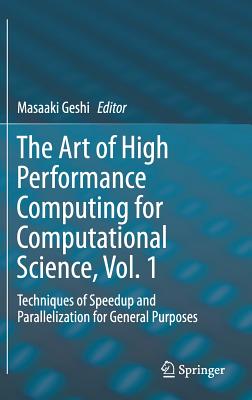買這商品的人也買了...
-
 系統管理員懶人包|Shell Script 自動化指令集 (Wicked Cool Shell Scripts)
系統管理員懶人包|Shell Script 自動化指令集 (Wicked Cool Shell Scripts)$480$379 -
 $755Perl 語言編程, 4/e (Programming Perl : Unmatched power for text processing and scripting, 4/e)
$755Perl 語言編程, 4/e (Programming Perl : Unmatched power for text processing and scripting, 4/e) -
 SoC FPGA 嵌入式設計和開發教程(Intel FPGA 大學計劃推薦,一線工程師實踐總結)
SoC FPGA 嵌入式設計和開發教程(Intel FPGA 大學計劃推薦,一線工程師實踐總結)$414$393 -
 深度學習 -- 硬體設計
深度學習 -- 硬體設計$750$675 -
 $602三維存儲芯片技術
$602三維存儲芯片技術 -
 UVM 實戰
UVM 實戰$474$450 -
 改變世界的九大演算法:讓今日電腦無所不能的最強概念 (暢銷經典版)
改變世界的九大演算法:讓今日電腦無所不能的最強概念 (暢銷經典版)$380$300 -
 Perl 語言 IC 設計實踐
Perl 語言 IC 設計實踐$474$450 -
 FPGA 可程式化邏輯設計實習:使用 Verilog HDL 與 Xilinx Vivado (第三版)(附範例光碟)
FPGA 可程式化邏輯設計實習:使用 Verilog HDL 與 Xilinx Vivado (第三版)(附範例光碟)$400$360 -
 三國鼎立唯一開源 CPU 架構 - RISC-V 處理器設計快速上手
三國鼎立唯一開源 CPU 架構 - RISC-V 處理器設計快速上手$780$616 -
 芯片驗證調試手冊 -- 驗證疑難點工作錦囊
芯片驗證調試手冊 -- 驗證疑難點工作錦囊$414$393 -
 System Verilog 驗證:測試平臺編寫指南, 3/e (SystemVerilog for Verification: A Guide to Learning the Testbench Language Features, 3/e)
System Verilog 驗證:測試平臺編寫指南, 3/e (SystemVerilog for Verification: A Guide to Learning the Testbench Language Features, 3/e)$588$559 -
 數位通訊系統演進之理論與應用-4G / 5G / pre6G / IoT物聯網, 6/e
數位通訊系統演進之理論與應用-4G / 5G / pre6G / IoT物聯網, 6/e$450$405 -
 集成電路設計 — 模擬、版圖、綜合、驗證及實踐
集成電路設計 — 模擬、版圖、綜合、驗證及實踐$570$542 -
 開源 RISC-V 處理器架構分析與驗證
開源 RISC-V 處理器架構分析與驗證$474$450 -
 SystemVerilog 硬件設計:RTL 設計和驗證
SystemVerilog 硬件設計:RTL 設計和驗證$468$445
相關主題
商品描述
電路設計小型化和系統化是未來的趨勢,傳統電路層級的設計已不能滿足複雜化和小型化的要求,新一代的SystemVerilog一經提出,便已受到廣大的關注,在短短的幾年內,便得到所有EDA大場的全力支持,而且也得到IEEE認可為新的標準,做為IC設計的第二大國,我們不能忽視這個潮流。藉由本書大量的範例,可增加演練的機會,相信一定能提升電路設計的能力。本書適用於大學、科大電子、電機、資工系「硬體描述語言」並且使用Verilog之課程使用。
目錄大綱
第1章 overview
發展歷史 1-1
EDA工具的支持進度 1-3
SystemVerilog的特性 1-3
SystemC 1-11
第2章 Verilog 2001
回顧Verilog 2001 2-1
Register changed to “variable” 2-4
$ferror 2-68
$fflush 2-69
$fgetc 2-70
$fgets 2-72
$fread 2-74
$fscanf 2-76
$fseek 2-77
第3章 Data Type
資料型態 3-1
auto variable vs static variable 3-1
Constant 3-6
Scope and lifetime 3-8
Nets and regs 3-12
State 3-16
2-State data type 3-17
logic data type 3-18
Void data type 3-19
String data type 3-20
String operators 3-22
String method 3-25
Event data type 3-29
User defined data type 3-30
Enumerate data type 3-31
Enumerated type ranges 3-34
Enumerated types in numerical expressions 3-35
Enumeration method 3-37
Pack vs Unpacked 3-39
Structures 3-40
Packed Unpacked structures 3-45
Packed Union 3-46
Casting 3-50
Dynamic casting 3-55
Array 3-57
Indexing and slicing of Array 3-59
Array function 3-61
Dynamic-array 3-63
Associative-array 3-64
Queue 3-67
Queue function 3-70
第4章 Operator
Operator and expression 4-1
Assignment operator 4-2
Wildcard equality and inequality operators 4-7
Uniary operator 4-12
binary operator 4-13
Static prefixes 4-16
Concatenation 4-18
Struct 4-20
Set membership 4-22
第5章 Procedural & Control
Procedural & Control 5-1
Selection statements 5-2
Loop statements 5-3
disable block 5-9
name blocks 5-11
return 5-12
foreach 5-14
final 5-15
event control 5-16
fork join fork join_none fork_join_any 5-21
wait fork disable fork 5-25
Synthesis convenient 5-25
第6章 Tasks and functions
Tasks and functions 6-1
忽略begin end 6-4
SystemVerilog function 6-5
Pass by value 6-8
Pass by reference 6-9
Pass by name 6-12
Self-defined data type task or functions 6-13
第7章 Interface
Interface 7-1
Name bundle vs generic bundle 7-8
Interface reference 7-11
Ports in reference 7-11
Modports 7-14
Parameters 7-20
第8章 Class
OOP(Object Oriented Programming) 8-1
class 8-2
constructors 8-4
object method 8-4
assignment 8-11
static class properties 8-13
This 8-16
inheritance 8-17
overridden members 8-19
super 8-20
Data hiding local 8-21
Data hiding protected 8-21
virtual class 8-23
第9章 Random Constraints
Random Constraints 9-1
randomize() with 9-4
distribution 9-6
function in constraints 9-7
rand in class 9-8
Inheritance 9-12
Implication(->) 9-17
Random weighted case(randcase) 9-22
$urandom and $urandom_range 9-25
rand_mode 9-27
constraint_mode 9-27
第10章 Coverage
驗證Coverage 10-1
覆蓋率Coverage 10-2
Covergroup 10-4
Coverpoints 10-5
Coverage bins 10-8
Cross coverage 10-15
Covergroup guard 10-16
Specify coverage options 10-18
covergroup parameters 10-19
ignore bins 10-21
illegal bins 10-22
第11章 Assertions
Assertion verification 11-1
Sequence declarations 11-3
Uprange sign 11-4
Implication Operators 11-10
Consecutive repetition 11-11
Non-consecutive repetition 11-13
Goto repetition 11-15
And operation 11-19
OR operation 11-24
Sample value function 11-28
Condition over sequence 11-28
Intersect operator 11-35
first_match operator 11-40
序列裏含匯流排資料 11-43
Assertion 11-44
Property 11-45
附 錄
A.1 SYNOPSYS VCS 附-1
A.2.1 Cadence NC 附-3
A.2.2 Running Coverage with Cadence Incisive 附-3
A.2.3 Running Coverage with Cadence Incisive 附-4
B.1 Source text 附-9
B.1.1 Library source text 附-9
B.1.2 Configuration source text 附-9
B.1.3 Module and primitive source text 附-10
B.1.4 Module parameters and ports 附-13
B.1.5 Module items 附-14
B.1.6 Interface items 附-17
B.1.7 Program items 附-18
B.1.8 Class items 附-18
B.1.9 Constraints 附-20
B.2 Declarations 附-21
B.2.1 Declaration types 附-21
B.2.2 Declaration data types 附-23
B.2.3 Declaration lists 附-26
B.2.4 Declaration assignments 附-27
B.2.5 Declaration ranges 附-28
B.2.6 Function declarations 附-28
B.2.7 Task declarations 附-31
B.2.8 Block item declarations 附-33
B.2.9 Interface declarations 附-33
B.2.10 Assertion declarations 附-34
B.3 Primitive instances 附-38
B.3.1 Primitive instantiation and instances 附-38
B.3.2 Primitive strengths 附-39
B.3.3 Primitive terminals 附-40
B.3.4 Primitive gate and switch types 附-40
B.4 Module, interface and generated instantiation 附-40
B.4.1 Instantiation 附-40
B.4.2 Generated instantiation 附-42
B.5 UDP declaration and instantiation 附-44
B.5.1 UDP declaration 附-44
B.5.2 UDP ports 附-45
B.5.3 UDP body 附-46
B.5.4 UDP instantiation 附-47
B.6 Behavioral statements 附-47
B.6.1 Continuous assignment and net alias statements 附-47
B.6.2 Procedural blocks and assignments 附-47
B.6.3 Parallel and sequential blocks 附-49
B.6.4 Statements 附-49
B.6.5 Timing control statements 附-51
B.6.7 Case statements 附-53
B.6.8 Looping statements 附-54
B.6.9 Task enable statements 附-55
B.6.10 Assertion statements 附-55
B.6.11 Clocking domain 附-55
B.7 Specify section 附-57
B.7.1 Specify block declaration 附-57
B.7.2 Specify path declarations 附-57
B.7.3 Specify block terminals 附-58
B.7.4 Specify path delays 附-58
B.7.5 System timing checks 附-60
B.8 Expressions 附-64
B.8.1 Concatenations 附-64
B.8.2 Function calls 附-65
B.8.3 Expressions 附-66
B.8.4 Primaries 附-69
B.8.5 Expression left-side values 附-71
B.8.6 Operators 附-71
B.8.7 Numbers 附-72
B.8.8 Strings 附-73
B.9 General 附-73
B.9.1 Attributes 附-73
B.9.2 Comments 附-74
B.9.3 Identifiers 附-74
B.9.4 Identifier branches 附-77
B.9.5 White space 附-77
































